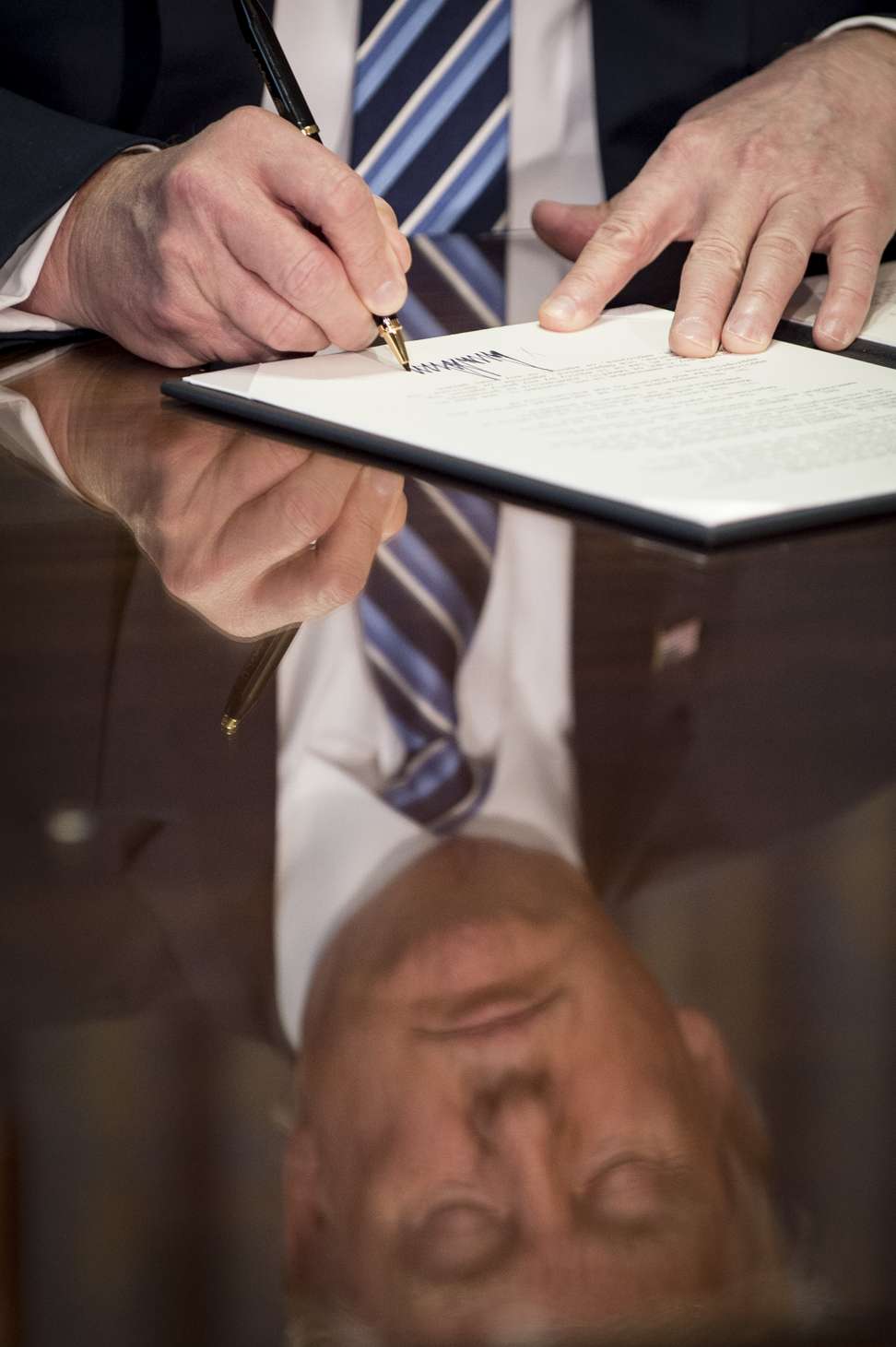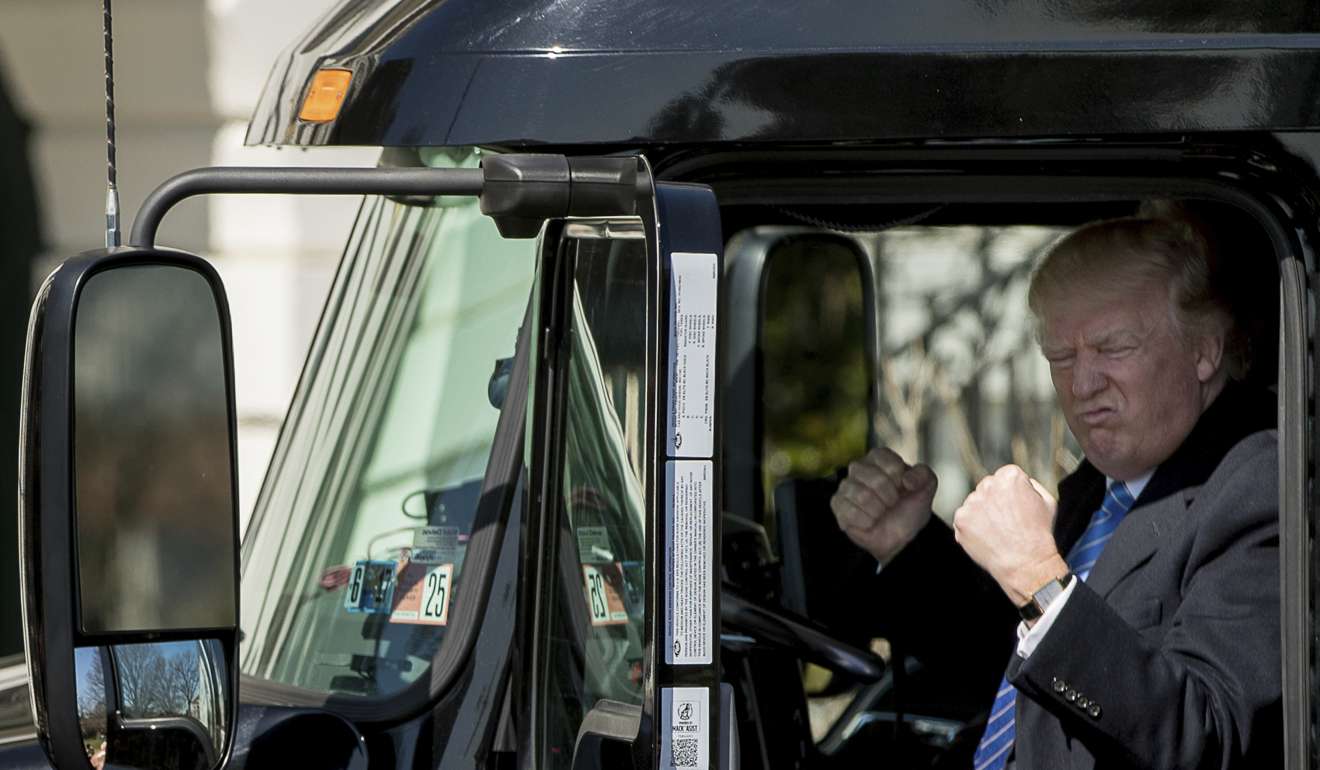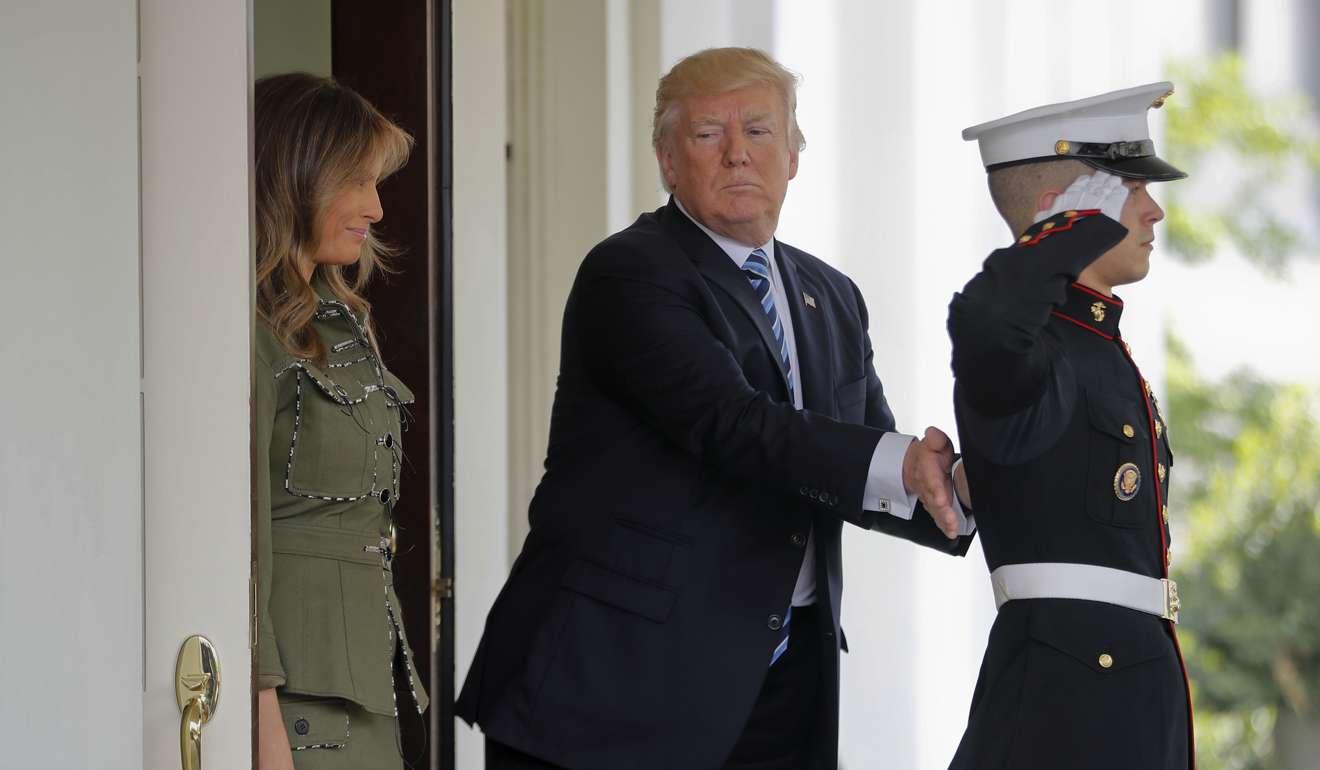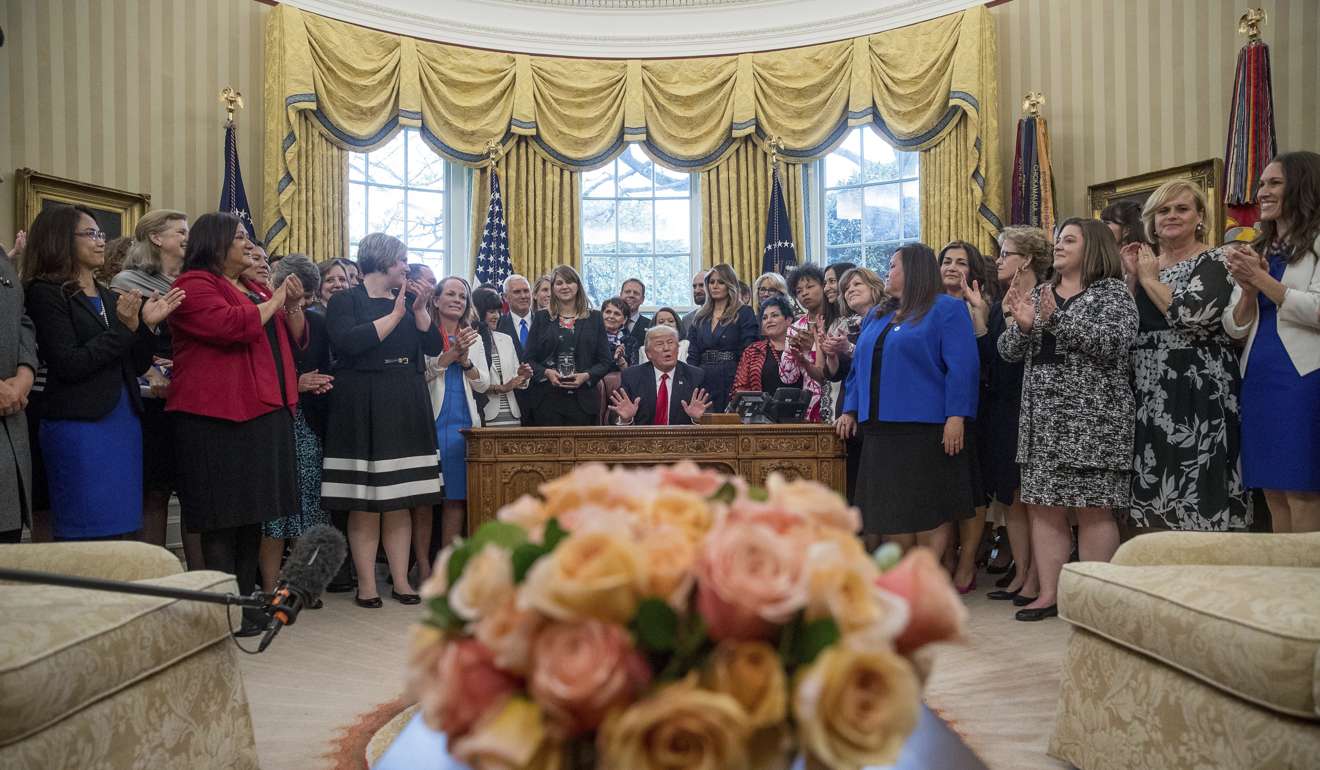
After flip-flops and missteps, how will Trump deal with his next 100 days?
‘Trump is going to be judged on three things: did he keep his promises to voters; did he revive this economy; and did he get out of this low growth rut’
Sweeping tax reform has been a front-of-mind issue for President Trump, who has taken an interest in the minute details of proposals under consideration by his administration. Aides are also being pressured to front-load the effort with the goal - already delayed - of having a bill approved before the end of this year.
The prospect that he could do something not accomplished since President Ronald Reagan passed a comprehensive tax reform package in 1986 is especially appealing to Trump. The effort took Reagan some 500 days at one of the high points of his power - the beginning of his second term. Trump, White House aides and outside advisers said, is buoyed by the prospect of accomplishing it in the first year of his first term.
SCMP GRAPHIC: What Trump did in his first 100 days
“There’s a coming together and a real growth going on inside with the senior staff,” said Larry Kudlow, a former Trump economic adviser who met with administration officials at the White House this week. “They’re getting their sea legs.”

By and large, the approach is being welcomed by congressional Republicans, who were burned after the White House seemed to only halfheartedly back the House-led effort to pass the American Health Care Act, which aimed to dramatically scale back President Barack Obama’s signature health-care law.
Trump administration officials are expected to spend the next six weeks soliciting feedback on the tax proposal and fine-tuning their approach. Treasury Secretary Steven Mnuchin was slated to appear Monday at the Milken Institute Global Conference in California, where he planned to make the administration’s case for the emerging tax reform package, followed by multiple television appearances later in the day. Trump may also hit the road to boost the plan, the White House said, though his schedule has not been confirmed.
The White House began communicating with members of the House Ways and Means Committee last weekend and would begin holding meetings with advocacy groups and lawmakers about the proposal this week. The aim now is to spend most of the summer refining the text of a bill, which could be voted on by the fall.
“I think Trump clearly needs to have a couple of legislative victories and put some points on the board when it comes to legislation that’s signed, sealed and delivered,” said Stephen Moore, a former Trump campaign economic adviser.
“Trump is going to be judged on three things: did he keep his promises to voters; did he revive this economy; and did he get out of this low growth rut.”

The centrality of Trump’s economic agenda to his success as president has crystallised in recent days, after yet another immigration-related effort - an executive order cracking down on “sanctuary cities” that do not let local authorities enforce federal immigration laws - was halted by a federal judge.
The White House fired out a defiant message accusing the judicial system of having “the blood of dead Americans on their hands” while Trump threatened to break up the 9th Circuit Court of Appeals, which upheld a lower court’s ruling halting another executive order banning immigration from six predominantly Muslim countries.
Meanwhile, a White House riven by strife and internal disputes remains divided on tenets of the president’s agenda, including the approach to taxes. Some of Trump’s populist advisers remain sceptical of a tax plan that includes large cuts for wealthy earners, and have pushed Trump to focus on keeping his promises to working-class voters.

But people close to the White House say there is a noticeable difference in the approach on taxes, compared with health care, in part because new forces - Mnuchin and Gary Cohn, director of the National Economic Council - are taking the lead on the effort. The more proactive, planned approach to addressing taxes is also reflective of a change in strategy from a maturing administration, observers say.
A number of Capitol Hill Republicans say that Trump and his administration are improving and beginning to grasp the complexities of running the federal government.
“I think part of it is there is a learning curve there, no question,” said Charlie Dent, a moderate Republican who has been critical of Trump at times.
Dent cited early “stumbles” - including Trump’s tweets about the size of his Inauguration Day crowd and accusations that the Obama administration of spied on him during the campaign - as indications that he is not surrounded by capable aides.

“I think they tried to do a great deal very quickly and they haven’t been properly staffed up,” he said.
But the next few months will not get any easier for Trump. With Republicans in control of Congress, they set the agenda and have few opportunities to pass partisan priorities before turning to several complicated subjects that require bipartisan action.
The White House abruptly abandoned a push for border wall funding last week, allowing lawmaker to strike a deal to keep the government open another week.
Congress is expected to vote in the coming days on a package, which aides said includes some $1.5 billion in funding for increased border security measures, but no funding for an actual wall.
They also said it adds $2 billion in new funding for the National Institutes of Health, and is expected to increase military spending.

Comprehensive details were not available Sunday as the measure had yet to be officially finalised and released. Lawmakers have until Friday to get new spending legislation to Trump’s desk.
Then, both parties can shift back to Trump’s top priorities - revamping the nation’s health-care and tax systems and confirming nominees to fill out his administration. The White House also hopes to pass an infrastructure bill this year, but acknowledge that it likely would have to wait until after tax reform.
There also is work to be done on the annual defence-policy bill - influenced this year by the ongoing showdowns with North Korea, Russia and Syria - a must-pass piece of legislation that is often used as a way to pass other unrelated items. And the new fiscal year begins on October 1, but lawmakers in both parties warned in recent days that the House and Senate have not started working on a new budget plan.

Asked if there is a plan to pass a budget for the next fiscal year, Republican Senator John McCain said: “I’m sure there is, I just haven’t detected it.”
On foreign policy, the House is expected to approve new sanctions on North Korea this week, while others are pushing to impose fresh penalties on Russia for alleged meddling in the US election. Trump is also set to make his first international trip to Europe in May, an opportunity for him to soothe anxieties about his administration across the Atlantic.
“It’s unclear whether some are actually allowed to renew or are afraid to renew or afraid to come forward,” Flake said of those given consideration under the Deferred Action for Childhood Arrivals programme.
WATCH: Trump sworn in as 45th US president
Also unclear is what Trump will do about them, since policy decisions beyond prioritising the enforcement of the deportation of criminal undocumented immigrants remain frozen.
“The president has said that he has a big heart and he’ll fix this. We don’t know what that means,” Flake said. “I think that’s an area where he’ll have to come back to Congress” for approval. When he does, Flake warned, debate on the issue could quickly expand to touch on other aspects of immigration policy - potentially forcing Trump to take firm positions on a controversial subject.
Meanwhile, Democrats are warning Trump that bipartisanship may be the only way to govern effectively.
“Look, you’ve had experience for 100 days,” said House Minority Whip Steny Hoyer, as if he were speaking directly to Trump.
“Your party is a divided party - you found that out. Some things you thought you were going to be able to do you haven’t been able to do, not because of Democratic opposition but Republican division.”
He added: “That ought to tell you that on important, must-do issues, you’re well-advised on a bipartisan basis to get those done.”
Additional reporting by Agence France-Presse


